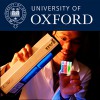Carrots, spiders and red salt – a fascination with light capture in biology
One of the most complex organs in higher life forms is the eye – even Charles Darwin commented that evolution of the eye by natural selection at first glance seemed "absurd in the highest possible degree”. Many living things on earth, from the most simple of single cell organisms to humans, respond to light using a chemical compound that appeared around 400 million years ago – the compound is called retinal. Biology has evolved and exploited this compound using some of the most fundamental principles of physics in ways that are so incredible, that the topic still fascinate scientists today. For more information about the lecturer's work please go to: http://www.bioch.ox.ac.uk/aspsite/index.asp?pageid=603
Our eyes can detect huge ranges of light, at a resolution and precision that far escapes any known man-made device. Even simple organisms that use retinal produce electrical energy from the sun at efficiencies that far exceed any solar cell. And to add to these amazing observations, light detection in nature occurs faster than in any man-made device.




